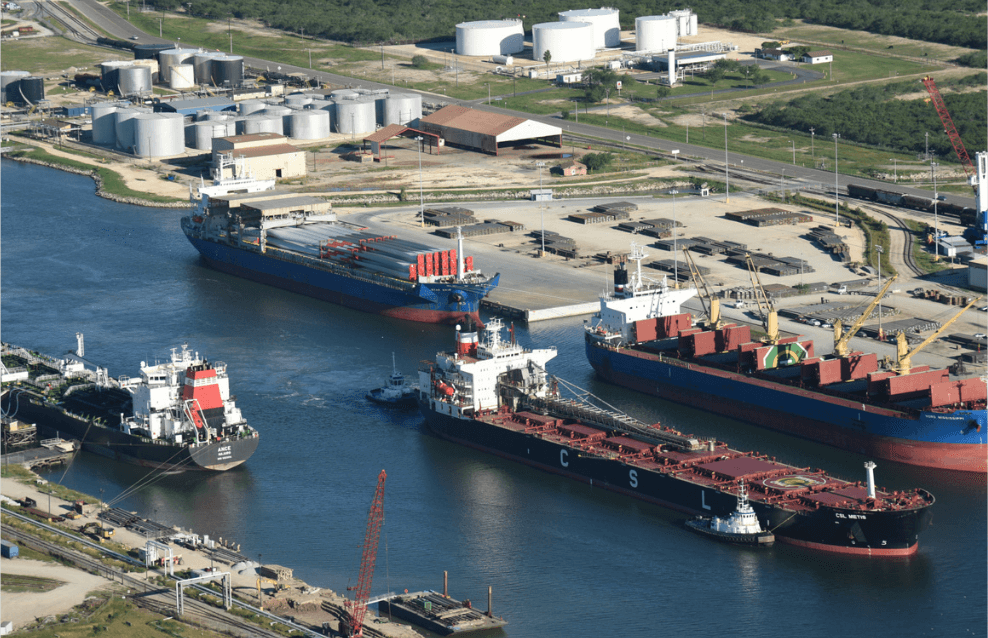Waterborne Cargo at Port of Brownsville Up 30 Percent, Climbs to Top Third in the Nation
Consistently setting new records, the Port of Brownsville continues to gain national prominence among the leading maritime ports in the United States.
According to the U.S. Army Corps of Engineers’ most recent annual report ranking 150 maritime ports nationwide, the Port of Brownsville rose to 55th position in the country for the movement of waterborne cargo in 2021, a significant leap from 66th place in 2020.

Operations at the Port of Brownsville. Photo courtesy of Port of Brownsville.
Throughout 2021, 8.9 million tons of cargo were transported via the port’s waterways, representing a 30% increase from 2020’s 6.7 million tons. During that same period, traffic at the port recorded robust vessel activity with 1,854 vessel calls in 2021, signaling a 10.9% increase from the previous year’s total of 1,671.
“The Port of Brownsville has arrived, and we’ve been here for a while. We’re starting to see the incremental impact that continued growth has had in the region, our community, and the whole state of Texas,” said Port Director and CEO Eduardo A. Campirano. “We are proud of this accomplishment, and thankful to our business partners that have helped us reach these metrics.”
This upward trend is reflected in the unaudited cargo volumes for 2022, as the 9.9 million tons of waterborne cargo accounted for more than half of the 15.2 million tons of overall cargo transported at the port this past year.
Strategically positioned at the crossroads of major shipping lanes that connect the United States to Mexico and beyond, the port serves as a critical gateway for international trade.
Currently the port’s 42-foot deepwater ship channel and cargo-handling facilities allow it to accommodate a wide variety of vessels and cargoes, including containerized cargo, bulk commodities, and heavy-lift project cargo.
Additionally, the port handles a variety of commodities including steel, wind energy components, and liquid bulk products. The port’s plan to deepen the channel to 52 feet will propel the port further in the global marketplace, allowing it to handle larger vessels and increasing cargo volumes.
The Port of Brownsville’s strategic location, modern facilities, and strong economic impact make it a critical player in the global shipping industry and a vital component of the United States’ trade infrastructure.
